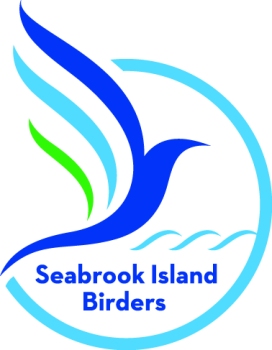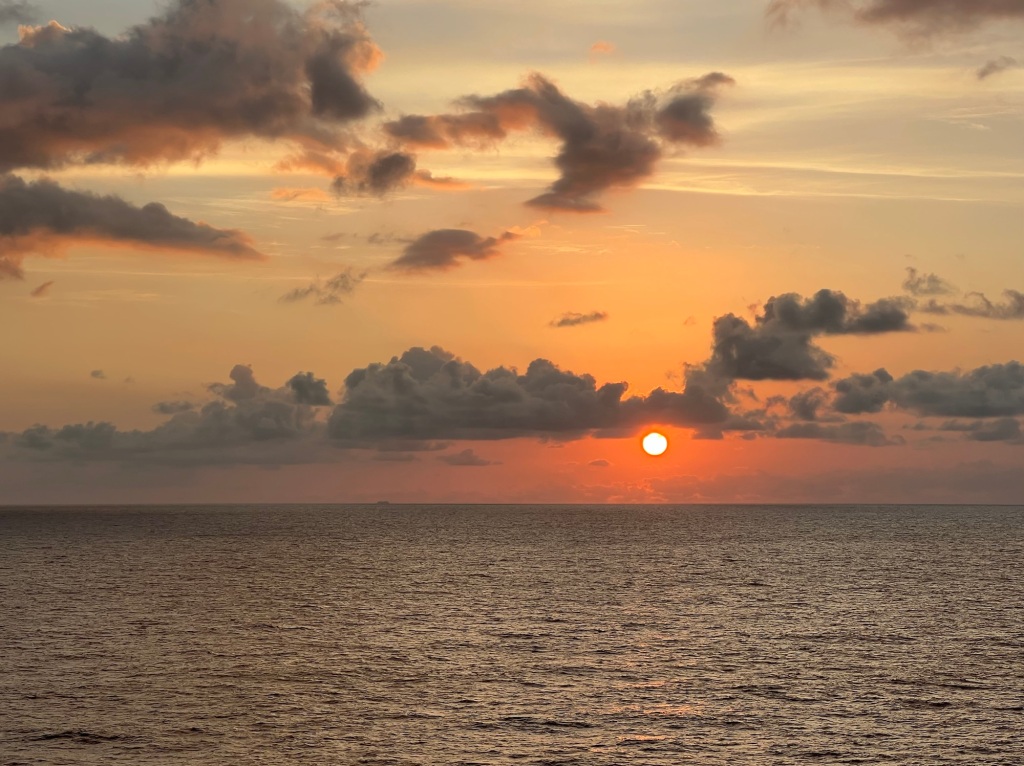
It was time to set sail again, and for us, January and February are perfect months to take a cruise. In winter the destinations aren’t as crowded, we get to escape the cold weather in favor of warm, tropical breezes, and the overall pace on the ship is laid back and relaxed. Very few families with small children are on board in winter, but quite a lot of retirees escaping the snowy north. The down side to all this is it’s pretty calm around the ship at night, and the casino winds down earlier than normal. But that’s okay, with so much going on during the day a few quiet evenings are appreciated.
Our cruise was 12 nights, leaving from Miami and stopping at 7 ports along the way. Jamaica, Costa Rica, Panama, Cartegena, Aruba, Bonaire and Curacao. For someone who loves birds, and bird photography, I was very excited to have a day in each of these warm climates, especially birding hot spots like Costa Rica and Panama. My goal was to see as many new life birds as possible. My husband’s goal was to read as many books as possible, relax, and enjoy time away from work. We were thrilled to accomplish both.
Jamaica was our first stop, and having been there a few times before, we decided to get off the ship and just wander around. It proved to be a good choice as we saw 11 species of birds right around the port shopping area, including four new life birds for me. Life birds are species of birds you’re seeing for the very first time. Or, in my case, birds I’ve probably seen in years past but since I wasn’t keeping track back then, I’m now recording the observation for the first time. Ebird is a great way to do this, but there are many field guidebooks if you prefer to write it down and add personal notes.
Doves, a Loggerhead Kingbird, and the Bananaquit were the highlights.

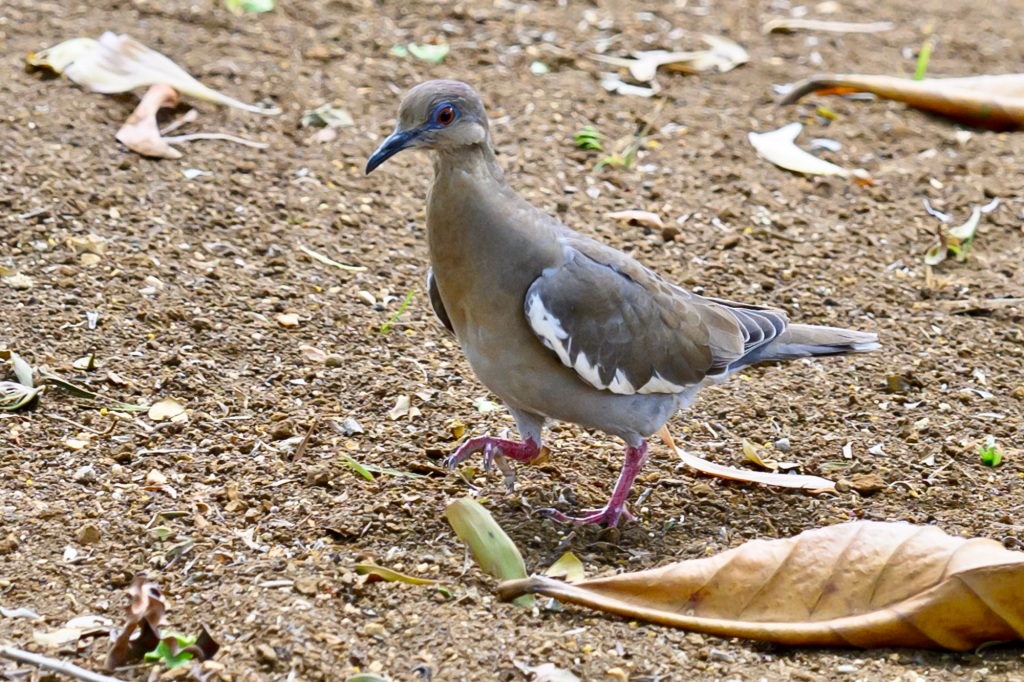
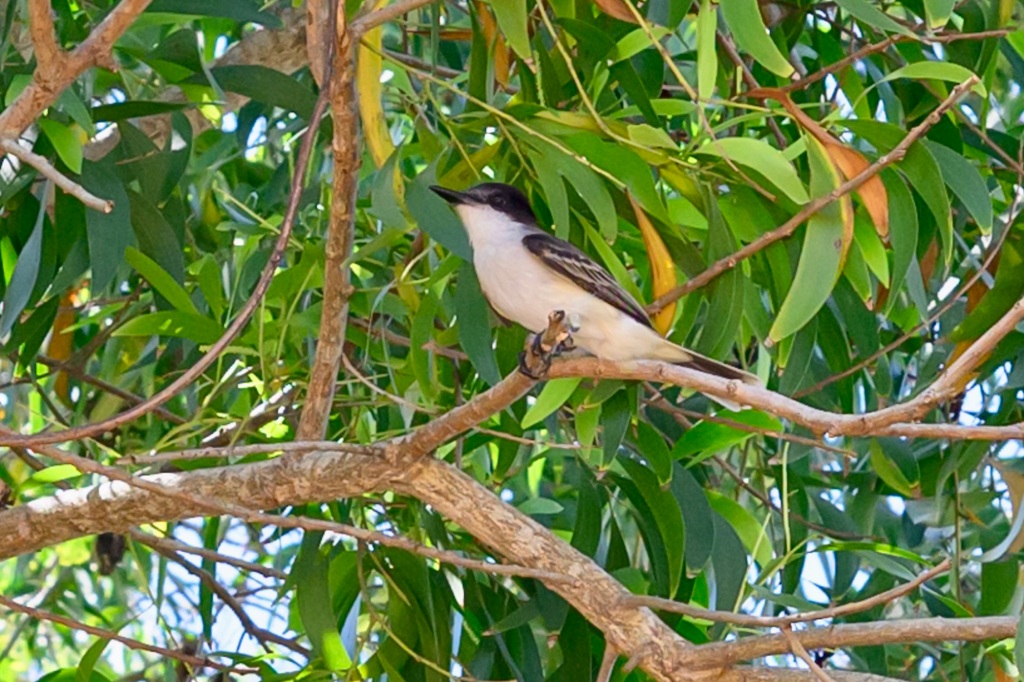
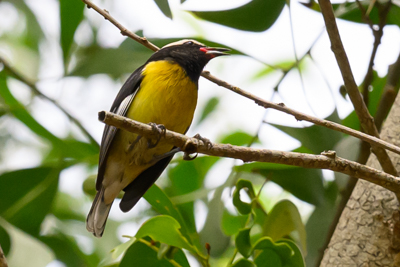
Flying Boobies!
After departing Jamaica we set sail for Costa Rica. Moving at a leisurely pace, we had a day at sea in between the two ports, so I kept my eyes open for pelagic seabirds, birds that spend most of their life out at sea. I was hoping to spot a few (for the life list) but also because other members of Seabrook Island Birders had seen and written about these ocean-dwelling birds, and I was intrigued.
Early on our fourth day we noticed a few large, brown birds flying near the ship. A Brown Booby! Later in the morning they were joined by a few more white and black birds of the same size. After a closer look we discovered they were another booby species – the Masked Booby. (Thank you Bob for helping with the identification!) I ran to my cabin to grab my camera, in hopes of taking a few photos before they flew away. Not to worry, by lunchtime we had a flock of more than 50 Masked Boobies and a handful of Brown Boobies soaring, swooping and diving all around the ship! And they got so close I thought a few were going to land on the deck rail.

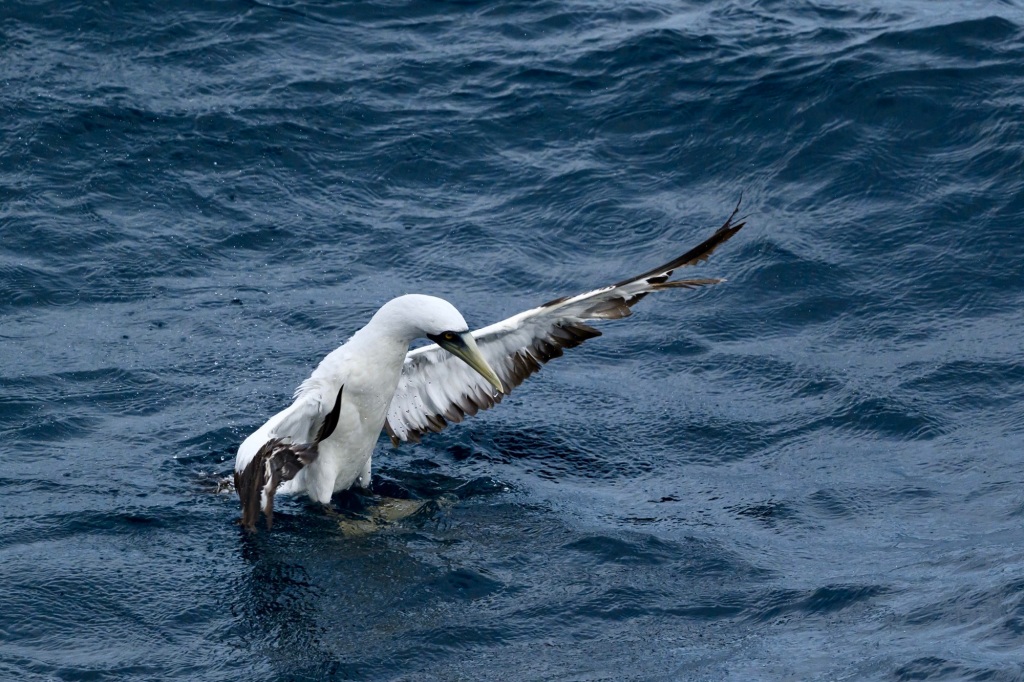
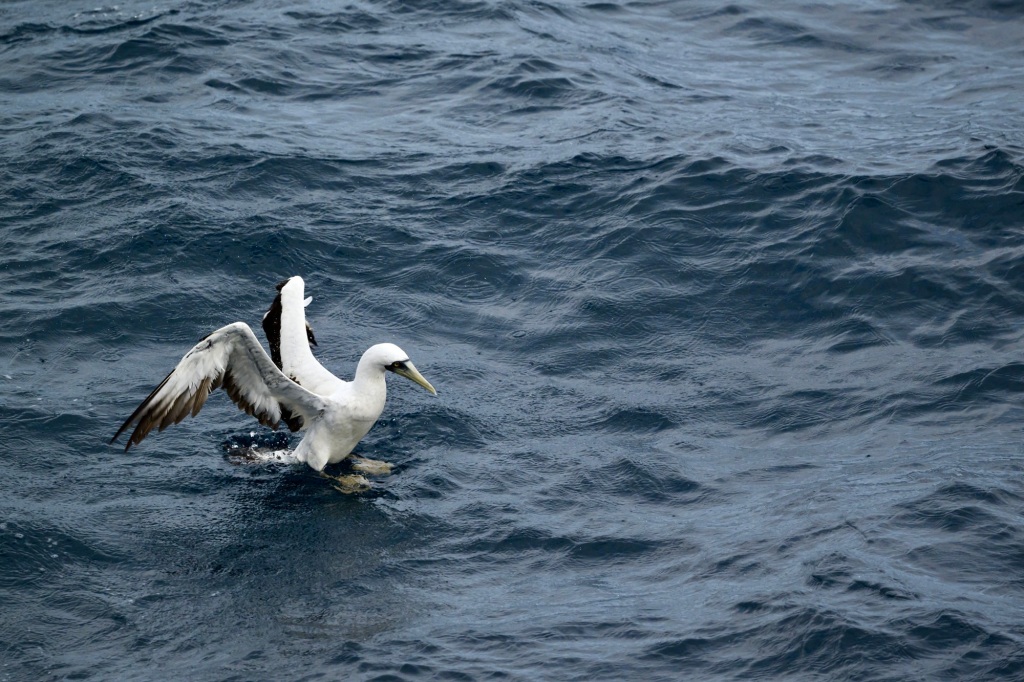
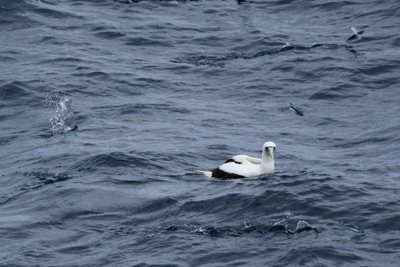
The ship stirs up schools of fish as we push through the water, so the birds were taking advantage of this activity. Jumping and flying fish were all around us, and the boobies were even catching a few mid-air. It was like manna from Heaven – fish were everywhere! These are impressive birds, diving at incredible speeds, beak first into the water. They’re also long distance commuters, roosting and breeding on small oceanic islands in the tropics, often hundreds of kilometers from where they forage and dive for fish each day. It was amazing and mesmerizing to watch.
Veragua Rainforest
Next port was Costa Rica, known for its abundant and diverse wildlife. More than 500,000 species of wild animals live in this country, many rare and endangered. From slow-moving sloths to comical monkeys, tiny little tree frogs to 16′ crocodiles, endangered Jaguars to wild jungle cats. There’s an abundance of snakes – many that are venomous, plus pre-historic iguanas, whale sharks and sea turtles, just to name a few. But I was most excited about the birds. Tropical birds number at 918 species, with 50 species of hummingbirds alone! I could have spent days just wandering through the rainforest.
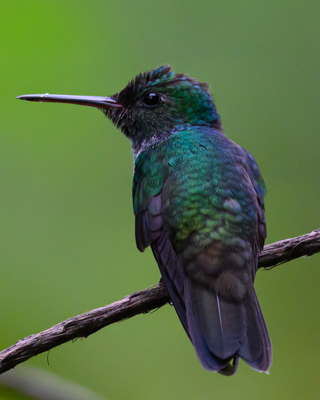
For our day in Costa Rica we chose an organized bird-watching tour of the Veragua Rainforest. We were a group of both serious and novice birders, guided by a local guide, and a driver for which we were eternally grateful. With frequent rains, the dirt roads were muddy and full of ruts, but our driver knew the best routes to take, even stopping on the spur of the moment to let us hop out and look at exotic birds perched on a wire, or a sloth hanging from branches at the top of a tree.

It was cloudy and rainy in Costa Rica, making it harder to photograph birds perched up high in the canopy, but I still managed to spot several new birds for my life list.
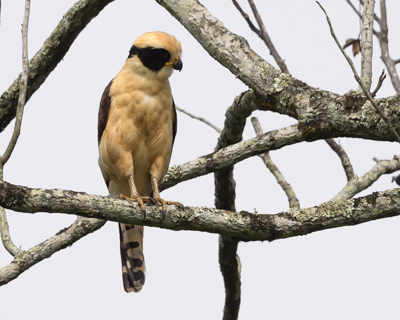
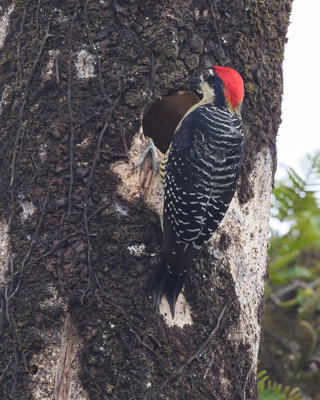
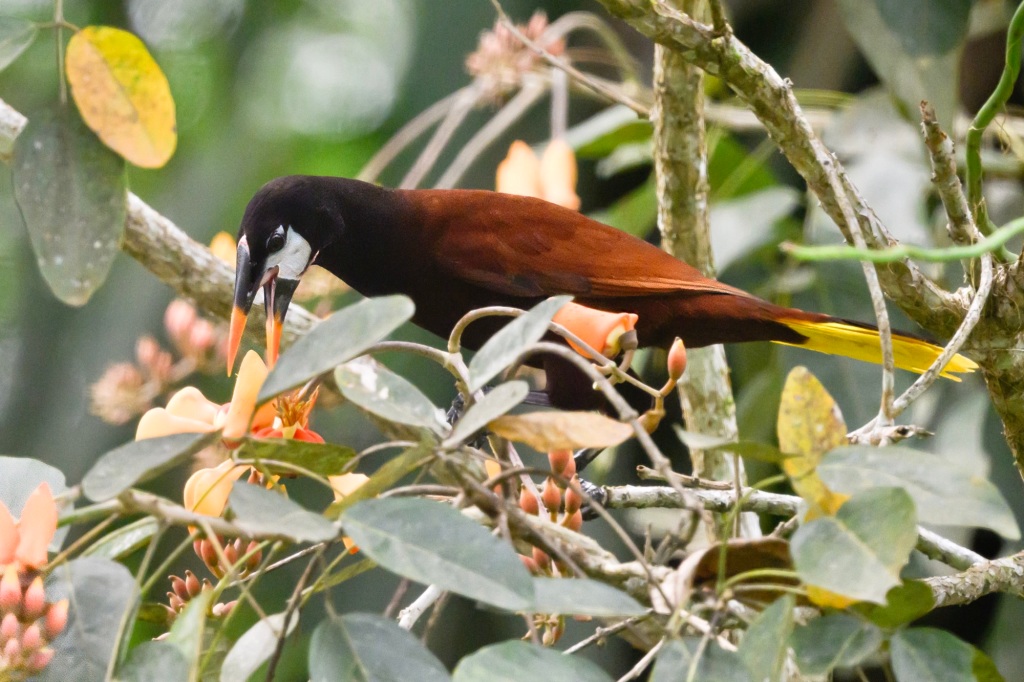
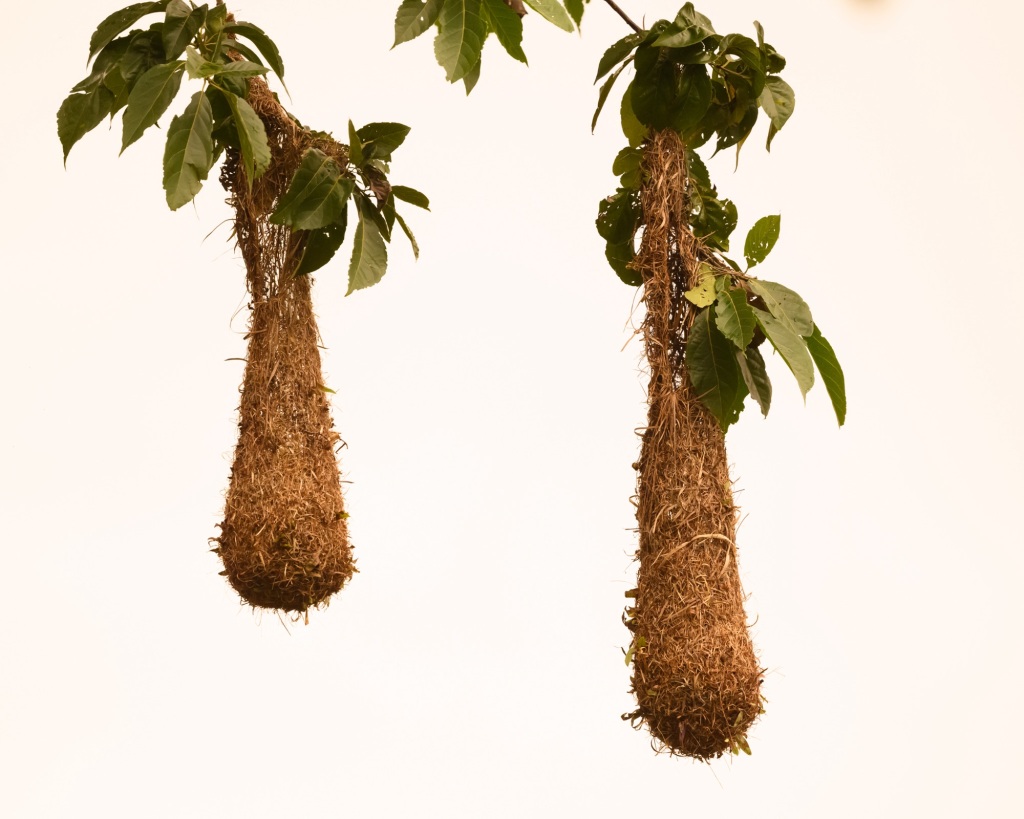
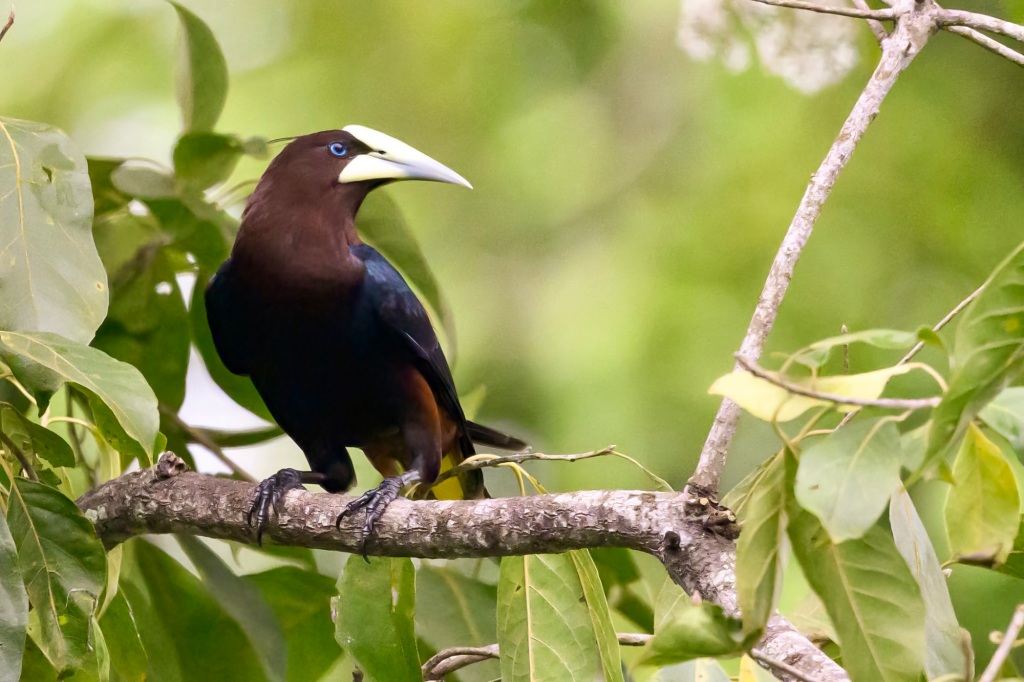
Last but certainly not least, we saw (and heard) three beautiful Toucan species in Costa Rica. A Keel-billed Toucan, Collared Aracari, and a Yellow-throated Toucan. We usually heard the Keel-billed Toucans before we saw them as they have a frog-like croak which they repeat over and over. It’s loud enough to be heard more than a half mile away! The Collared Aracari is high-pitched, and the Yellow-throated Toucan gives a series of loud yelps.
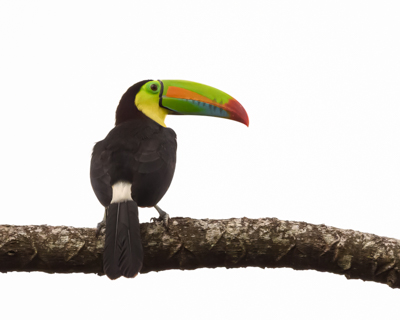
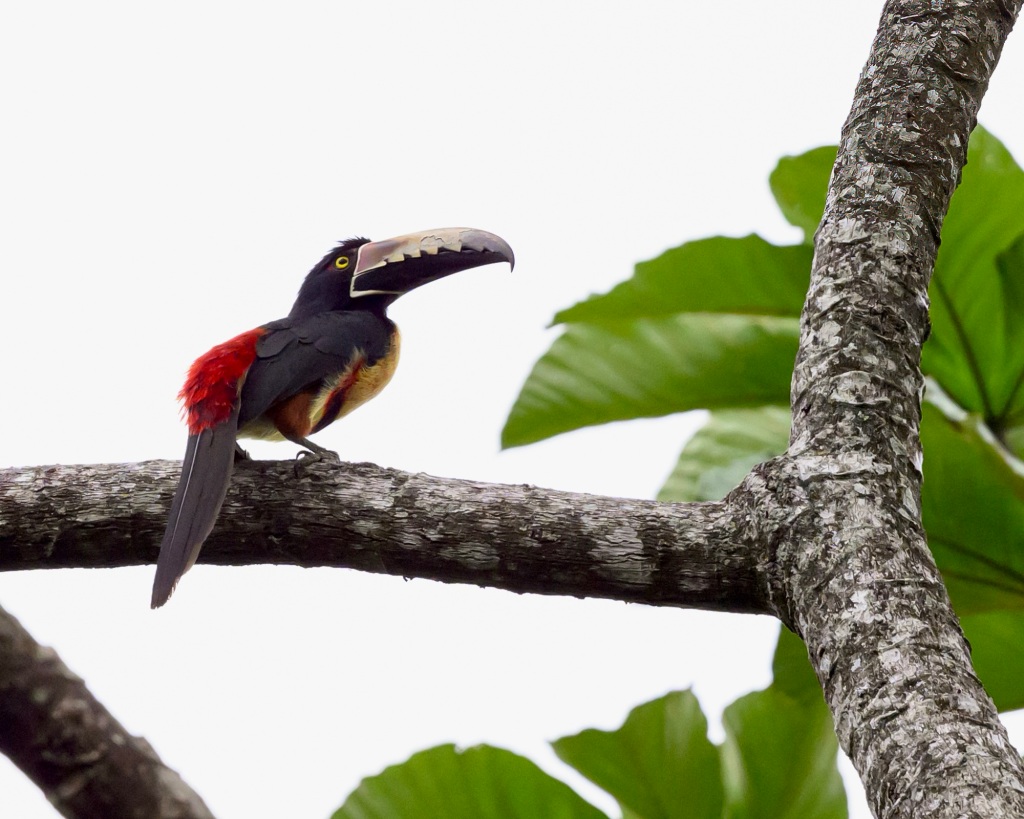
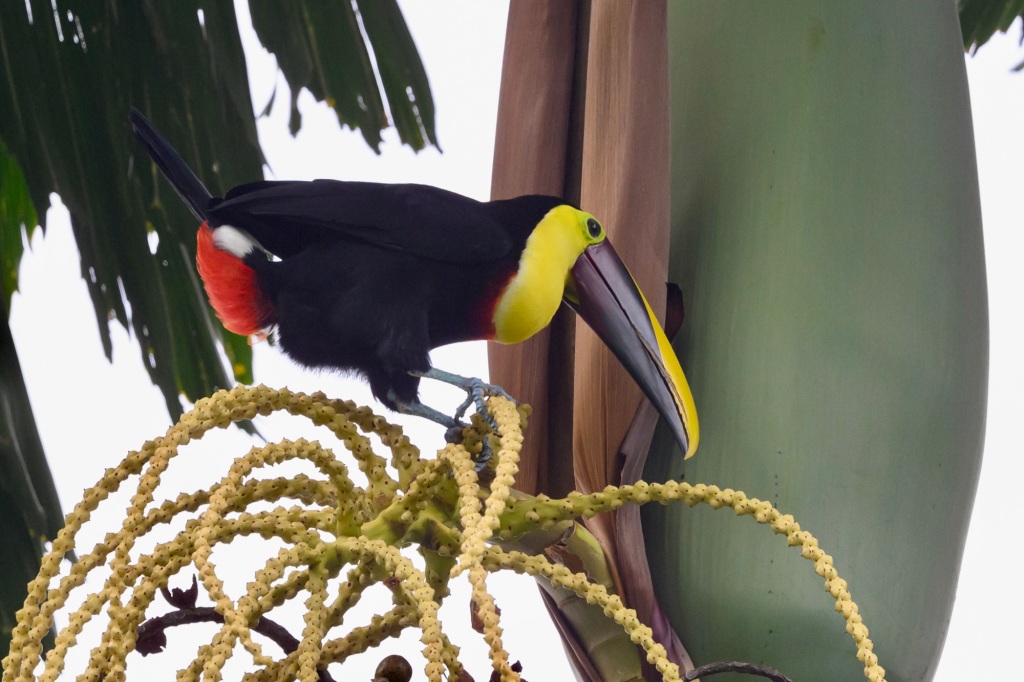
Toucans eat a wide variety of fruit and play a vital role in seed dispersal, replanting the rainforest with every meal. They will sometimes eat lizards, large insects, and the eggs and young of other birds, but animal matter only makes up a tiny portion of their diet. With their colorful bill and plumage, they were a highlight for everyone in our group.
We dodged rain showers all afternoon (it is the rainforest, after all) and made our way back to the port after a day full of firsts. Dinner, live entertainment, and the casino wrapped up day five as we departed Costa Rica and cruised the short distance overnight to Panama. Panama is where we met our guide, Igua, and had one of the best birding excursions of the cruise. Stay tuned, much more to come!
To learn more about Costa Rica, click here.
For more information about Veragua Rainforest, click here.
Submitted by Gina Sanders
Photos by Gina Sanders
